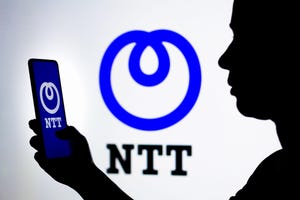The Linux Foundation's Acumos AI Project has issued its initial release on schedule but its 'app store' is still rather bare.

The Linux Foundation's Deep Learning Foundation (two foundations for the price of one!) has announced the availability of the first official release of Acumos AI, its open source platform and framework (yes, apparently they are separate things) for building, sharing and deploying artificial intelligence models. (See LF Deep Learning Unveils First Acumos AI Release.)
I've been following the Acumos project since its inception and wanted to share my views on this initial release, which is called Athena.
AT&T first announced the Acumos project in October 2017 in collaboration with Tech Mahindra. As Light Reading reported at the time, developing new AI "apps" has historically been complex, cost-prohibitive and siloed within separate organizations. Acumos fills a gap in the industry for AI by creating an AI marketplace (think app store) that lowers the barrier to entry and makes AI apps (more like models, really) more accessible to more organizations. (See AT&T Launches New AI, Microservice Initiatives and AT&T's Acumos: Transforming AI Apps From Snowflakes to Lego Bricks.)
The project was hosted by the Linux Foundation and became the first initiative within the Deep Learning Foundation (DLF), which was announced in March 2018. (See Linux Foundation Injects Open Source Into AI.)
Although the Linux Foundation has given the umbrella project the "deep learning" moniker, it does, in fact, cover the broad AI landscape and not just the deep learning subset (see this article and diagram for a brief explanation of the differences).
In July this year I attended the Acumos AI Day in Paris (see Lowering the Barriers to Telco AI With Acumos) where operators including Orange and Deutsche Telekom explained how they were leveraging artificial intelligence to improve operational efficiency.
As Light Reading reported in August, two new projects were added to the Deep Learning Foundation alongside Acumos: Angel and Elastic Deep Learning (EDL). Like Acumos, they are not specific to the telecom sector but are intended to be of use to any industry. Angel was contributed by Tencent Inc. , the Chinese Internet conglomerate (gaming, messaging, etc.) while EDL came from Baidu Inc. (Nasdaq: BIDU), the Chinese search engine. (See Acumos Much More Than a Telcom-Focused AI Project.)
On November 5, the Linux Foundation held the second Acumos AI Day, this time in New York. The presentations, some of which I saw via webcast, went into more detail about the marketplace of "apps," the platform architecture and the minutiae of how the platform works (on-boarding, composing, publishing and deploying models, assembling AI pipelines). In addition to the seed code donators, AT&T and Tech Mahindra, and the other DLF founding members (in alphabetical order -- Amdocs, B.Yond, Baidu, Huawei, Intel, Nokia, Orange, Red Hat, Tencent, Univa and ZTE), the logos of Ciena, DiDi and Ericsson were on display as newly added members of the DLF community.
Now entering its fifth year, the 2020 Vision Executive Summit is an exclusive meeting of global CSP executives focused on navigating the disruptive forces at work in telecom today. Join us in Lisbon on December 4-6 to meet with fellow experts as we define the future of next-gen communications and how to make it profitable.
So, what does the Athena release bring? Well, for one thing, it is the first official release, and apparently the deployment requires just one click, provided you know how to use Docker or Kubernetes. They have also done a lot of house keeping on the user portal, so sign-up is now "friendlier" and there is one single sign-on. Operations-wise, you can now share models privately within your team, and with specific companies, as well as share them publicly in the marketplace. You can also set up role-based permissions within your organization for accessing and using Acumos.
Athena runs to over 500,000 lines of code, has 78 reviewers, 69 contributors, and 38 commiters. It also has 42 "Epics," which are not codes for share trading or vinyl toys used in a children's game, but are in fact large bodies of work in a software project that can be broken down into a number of smaller tasks (called stories).
And what Greek god is next in store, six months after Athena? Well, Boreas -- the purple-winged god of the north wind, if you're not already acquainted -- is scheduled to blow in this coming May. The second release of Acumos will introduce data extraction pipelines that allow training of models within the platform. Boreas will include updates to assist closed-source model developers, including secure and reliable licensing components to provide execution control and performance feedback across the community. Boreas will also include integration with the Linux Foundation's ONAP and Akraino projects and will demonstrate some 5G use cases.
So what is the verdict, four months on from my last review of Acumos and the Deep Learning Foundation, under whose governing board and technical advisory council Acumos sits? Well, it's encouraging to see new projects being added to DLF, and the indication is that more are soon to come. It's also encouraging to see more telecom technology companies (Ciena and Ericsson) getting involved in DLF as well as companies from other industries (such as DiDi, the Chinese equivalent of Uber). It would be nice to see more telecom service providers becoming DFL members besides AT&T and Orange, or at least becoming active users, if not code contributors.
And most critically I would like to see more models available in the marketplace for general users (i.e. not DLF member company employees). Currently I can see just seven models, up from six in July. Figuring out how to charge for models and make sure people don't upload malicious models is an understandable handbrake on the marketplace's development. But let's hope we don't need to wait for the Zeus release to see these issues fixed.
— James Crawshaw, Senior Analyst, Heavy Reading
Read more about:
OmdiaAbout the Author(s)
You May Also Like











